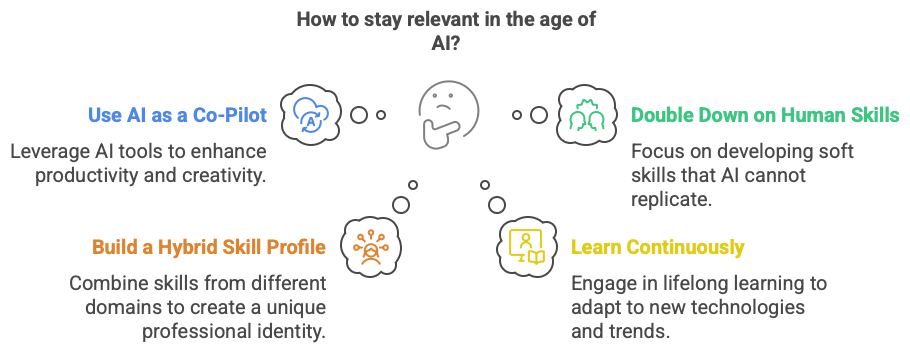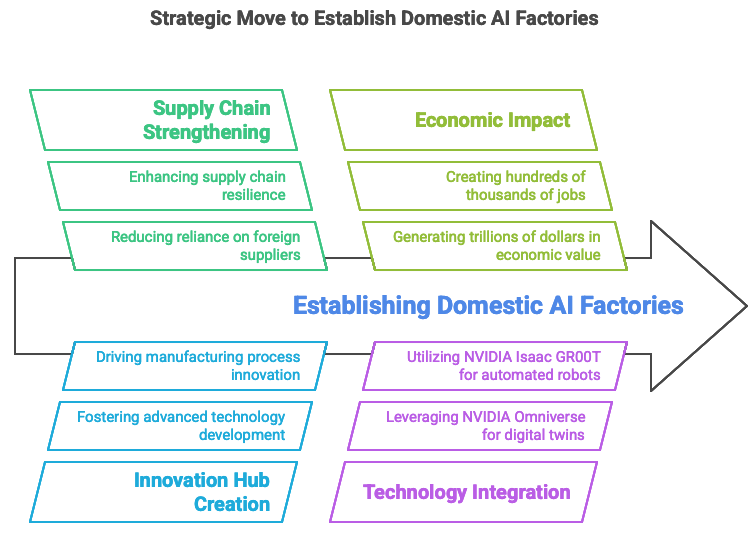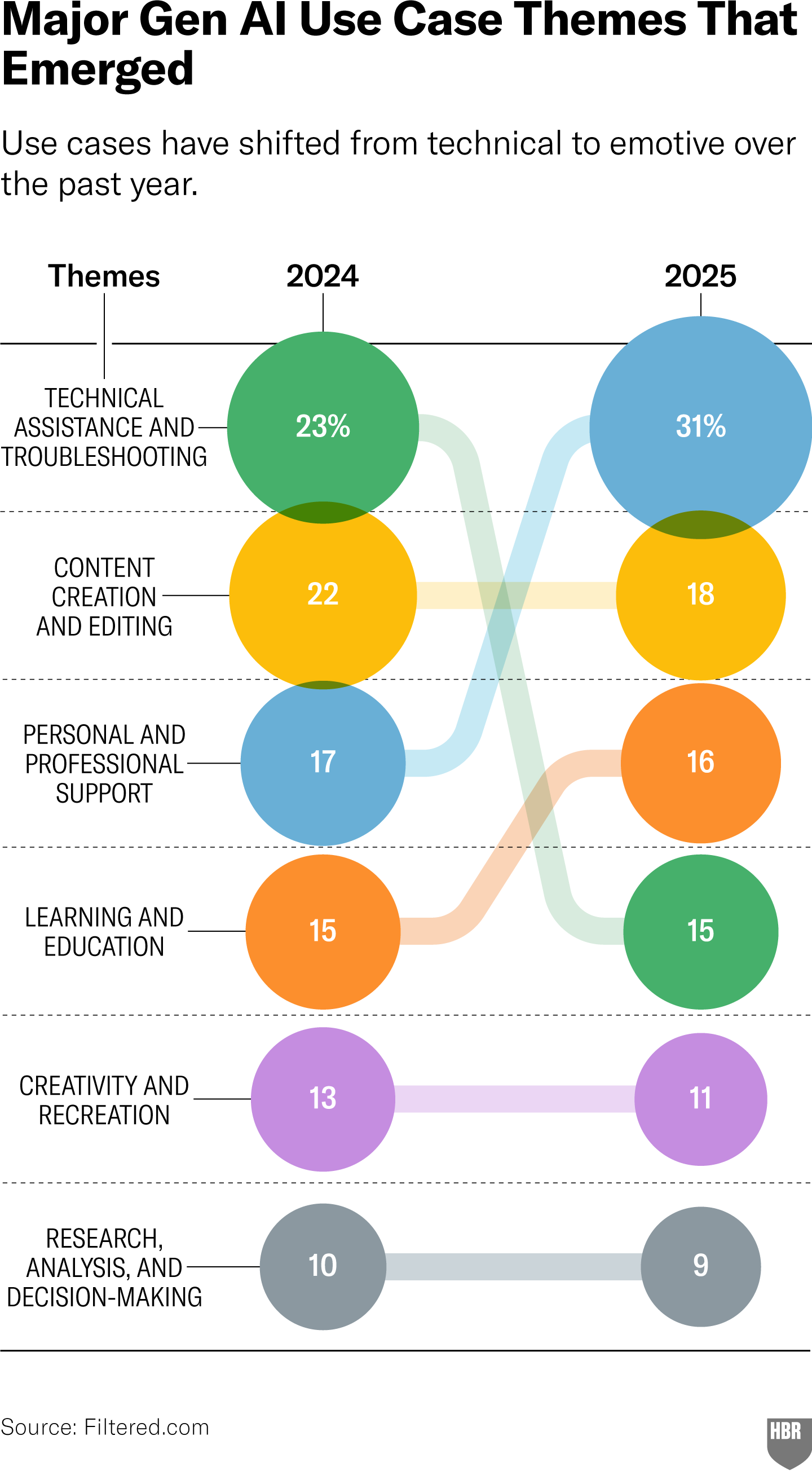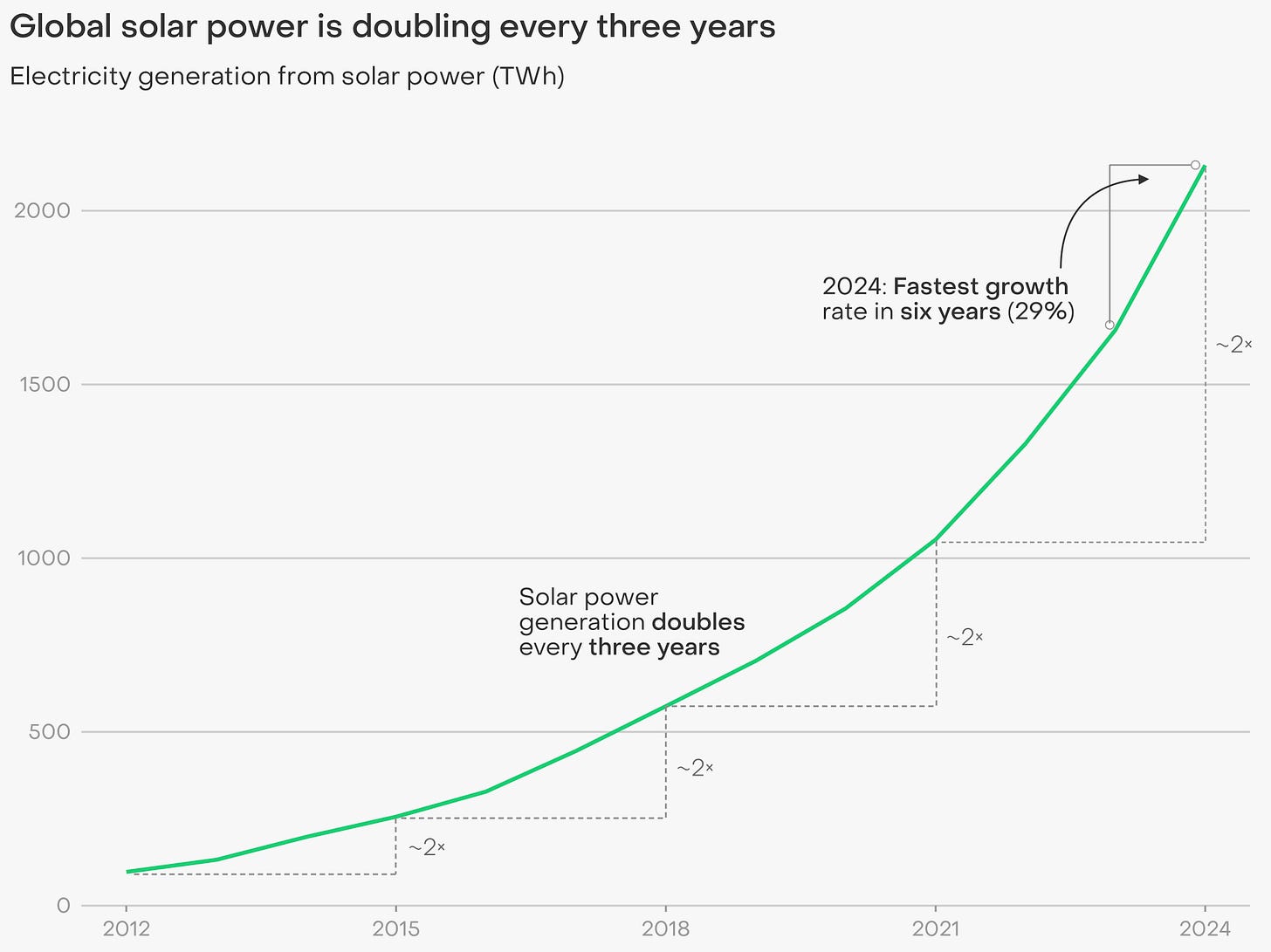Welcome to Binary Circuits’ 17th weekly edition
Your weekly guide to most important developments in technological world
Dear Readers,
Binary Circuit investigates trends, technology, and how organizations might profit from rapid innovation. GreenLight, the brain behind Binary Circuit, finds possibilities, analyzes challenges, and develops plans to fit and grow firms to stay ahead. Looking to scale your business, partners, or AI/technology integration
This week's Binary Circuit analyzes what NVIDIA's $500B investment to build domestic AI infrastructure and chips means for reviving American manufacturing. As users increasingly depend on generative AI for therapeutic, goal-oriented, and daily life assistance, we also examine the emotional turn in this technology. We assess the need for smart digital strategies and sustainable infrastructure as AI's energy footprint grows. Finally, we analyze how individuals can future-proof their careers by combining AI fluency with human abilities.
Let’s dive in.
Safeguarding careers and businesses as the tsunami of AI rises
With businesses like Shopify needing workers to prove they cannot be replaced or assisted by artificial intelligence (AI), the rise of this technology has sparked a surge in job security issues. This situation raises questions about which jobs are safe from AI and how to ensure one's role is included among them.
Although it lacks emotional nuance, real-life experience, and cultural intuition, AI lacks human perception. Safe zones include brand strategists, creative directors, writers, screenwriters, illustrators, R&D leaders, and product innovation leaders.
Human professionals in human-centered roles—such as therapists, coaches, teachers, medical professionals, and salespeople—also excel.
For humans, high-context, on-the-ground roles like construction managers, emergency responders, and public safety officials are best. These positions require ethical judgment, situational awareness, and improvisation.
Professionals should use AI tools to enhance their output, emphasize uniquely human skills, create a hybrid skill profile, engage in continuous learning, and serve as the ethical compass to remain relevant in an AI-driven future.
The future of work revolves around humans performing tasks that AI cannot; lifelong learning is crucial, and AI will not replace people. However, remember that a human using AI can certainly replace a person not using it.
The most successful professionals in the AI era will be those who redefine their roles through technology rather than those who resist it.
NVIDIA’s bold bet to bolster domestic manufacturing. Immense opportunities in the making?
NVIDIA’s announcement signals its future and a new chapter for the U.S. industry. Reflecting calls for reshoring and strengthening local industry, NVIDIA aims to produce AI supercomputers and its innovative Blackwell chips in the U.S. Over the next four years, NVIDIA plans to establish $500 billion in domestic AI infrastructure. This initiative demonstrates a strong commitment to building AI infrastructure in the U.S., which will benefit American businesses.
NVIDIA is collaborating with key manufacturers to achieve this goal. Mass production supercomputer plants operated by Foxconn in Houston and Wistron in Dallas are set to open in 12–15 months. Blackwell chips have begun production at TSMC’s Phoenix fab, while Amkor and SPIL manage advanced packaging and testing.
Several factors have driven this approach. First, domestic manufacturing will enhance NVIDIA’s supply chain in a globally competitive, rapidly changing environment. Second, NVIDIA seeks to boost innovation in the US and become a hub for advanced technologies and manufacturing by creating "AI factories."
Critically, over the next decades, this initiative is projected to generate hundreds of thousands of jobs and trillions of dollars in economic value for the US.
NVIDIA will leverage its innovative technologies to optimize these "AI factories." Digital twins for simulation and production process enhancement will be developed in part under NVIDIA Omniverse. Furthermore, advancing autonomous industrial robot development through NVIDIA Isaac GR00T will promote efficiency and productivity gains. The significant integration of robotics and AI into production underscores the project’s disruptive impact.
NVIDIA’s commitment to rebuilding U.S. manufacturing signifies confidence in American business. Through strategic partnerships and substantial investments, NVIDIA is building a robust domestic AI infrastructure. This initiative could revive interest in American manufacturing and provide the U.S. a chance to remain a competitive force in developing twenty-first-century technologies. This initiative indicates that the era of American manufacturing, especially in high-tech sectors, may be on the brink of a significant resurgence, fueled by the insatiable demand for AI and the strategic vision of companies like NVIDIA.
Generative AI is shifting from silicon intelligence to soulful intelligence. Businesses, pay attention!
A year ago, generative AI was mostly a tool for writing code, drafting emails, or summarizing dense documents. Fast-forward to 2025, and it’s become much more human, finds a Harvard Business Review study. It’s a therapist, a life coach, a travel agent, and a silent companion at 3 a.m.
Over the past 12 months, user interest has doubled, costs have dropped, and access has widened. Governments are catching up, and investments are pouring in. And through all the noise, one thing stands out: real people are now using generative AI not just to work smarter but to live better.
The Emotional Turn: Top Use Cases in 2025
In a world of infinite prompts, the most popular uses of AI this year aren’t technical—they’re emotional. The latest analysis of 100 real-world use cases, sourced from Reddit, Quora, and web forums, reveals the trend.
“Therapy” tops the list, not just as a mental health tool but also as a companion—especially in places where human care is scarce or prohibitively expensive. One user from South Africa noted, “Mental healthcare barely exists… Large language models are accessible to everyone, and they can help.” The always-on, judgment-free nature of AI makes it an unexpectedly comforting partner.
Close behind is life organization. From creating personalized chore charts to breaking down overwhelming goals into manageable actions, AI is now a personal assistant for everything—from planning dinners to getting in shape.
Perhaps the most striking new entry is “finding purpose”—a use case rooted not in productivity, but in introspection. People are asking AI to help them set goals, reflect on values, and navigate life transitions. It's less about doing more and more about becoming more.
Thematic Shifts: From Fixing to Feeling
The use cases were grouped into six major themes, and the biggest growth was in Personal and Professional Support, now accounting for nearly a third of all activity. That’s a big shift from last year when technical troubleshooting dominated.
This signals a broader trend: generative AI is transitioning from being an efficiency engine to becoming a tool for self-improvement, reflection, and even emotional healing.
Generative AI is used for various tasks, including creating recipes, travel itineraries, and fine appeals. Users also seek AI for pep talks, public speaking practice, and even connecting with deceased loved ones.
More Skilled, More Skeptical
In 2025, users will be more sophisticated, craft better prompts, understand AI’s limitations, be skeptical of bias, censorship, and the business models behind these tools, and not be afraid to walk away when the values don’t align.
At the same time, there’s optimism—especially around agentic AI: the idea that AI could start doing things for us, not just advising us. One user wished their model could “cancel a subscription before the free trial ends.” Soon, it probably will.
Why This Matters for Businesses
Understanding how user behavior is evolving with generative AI isn’t just interesting—it’s strategic. As AI use shifts from technical tasks to emotional, daily-life support, businesses that adapt to these changing patterns will be better positioned to create relevant products, services, and experiences.
Whether you’re building enterprise tools, consumer apps, or digital services, recognizing that people now use AI to organize their lives, explore their purpose, or find emotional support opens up entirely new markets. Companies that tap into this shift—not just with features but with empathy—will build stronger brand loyalty and stay ahead of the curve.
AI is no longer just a backend productivity tool. It’s becoming a front-end experience—intimate, personal, and central to daily life. Businesses that understand this will thrive, while those that don’t may be left behind.
So, where are we headed?
In 2024, the safe bet was that AI would just keep getting better. That prediction still holds. But this year, the direction of improvement is interesting, focusing on clarity, confidence, connection, and companionship.
AI is an energy story rather than only a software narrative.
AI is crucial as the center of the next generation of digital revolution. Benevolent applications and innovative models aside, behind the headlines is a less obvious but seismic change: the rising energy demand from artificial intelligence data centers.
The International Energy Agency (IEA) projects that by 2030, global data center energy consumption will more than double from 415 terawatt-hours (TWh) in 2024 to a projected 945 TWh. This exceeds Japan's total consumption, and its impetus stems from AI’s proliferation.
Power behind AI
AI is transforming global power dynamics, affecting not just company operations. By developing large-scale foundation models and facilitating real-time inference across sectors, AI workloads demand significant energy.
America is leading this data center explosion; other nations, including China, Japan, and Malaysia, follow. Actually, U.S. AI data centers could soon consume more than the whole heavy industrial sector—including chemicals, steel, and cement—consumes.
This presents a competitive chance as well as a daunting operational issue for corporate leaders: how to maximize AI output while controlling the growing cost and complexity of its energy footprint?
Climate risk and innovation’s response
Between now and 2030, data centers are expected to propel about half of the increase in electricity demand. Their cooling requirements also put pressure on nearby water supplies and electricity systems, which raises questions about infrastructure resilience and carbon emissions.
AI is the cause of the issue as well as the solution. It can maximize grid operations, project demand surges, lower data center waste, and raise the effectiveness of renewable energy sources. However, the technology needs to be matched with a deliberate dedication to sustainability if one is to unlock this dual role.
A smarter approach to the AI era
Businesses must change their digital infrastructure strategy with energy in mind if they are to flourish in an AI-powered future.
Here is how:
Design for Efficiency: To lower energy loads, move toward low-latency inference, edge computing, and optimal models.
Invest in green infrastructure: Build and collaborate with data centers that use sustainable design, effective cooling, and renewable energy sources.
Including artificial intelligence in operations: Use artificial intelligence to track and maximize your personal energy consumption, lowering carbon and costs.
Report and adjust: Track energy use and match ESG targets to ensure your company model is future-proof.
Businesses' early recognition of this will help them be resilient, responsible, and reputationally strong, as well as innovative. AI adoption aligned with sustainability can turn an energy crisis into a lasting competitive advantage as tech and infrastructure merge.
Chart of the week:
Solar power is the fastest-growing power source for the 20th consecutive year. Solar generation doubled every three years, reaching 2,131 TWh in 2024.
Solar power generation surged by a record 474 TWh in 2024, marking the largest annual growth ever.
Solar energy’s surge, along with other clean sources, has increased the global share of renewable power to over 40% of global consumption.
Sound bites you should know:
South Korea increased its semiconductor support package to $23.3 billion, a 27% y-o-y rise, to counter Chinese competition and uncertainty in U.S. policy. Is South Korea creating a firewall against Silicon geopolitics?
OpenAI releases GPT-4.1, tailored for developers with enhanced performance for software tasks and integrations. Is GenAI becoming the single road to the future of software programming?
Claude makes a significant leap as it now searches your entire Google Workspace and conducts research in minutes. Is AI becoming a true collaborator at work?







